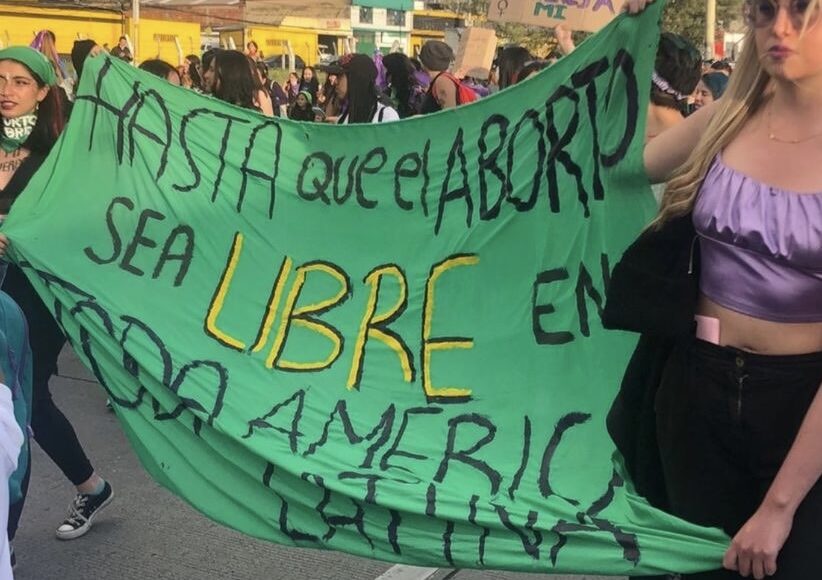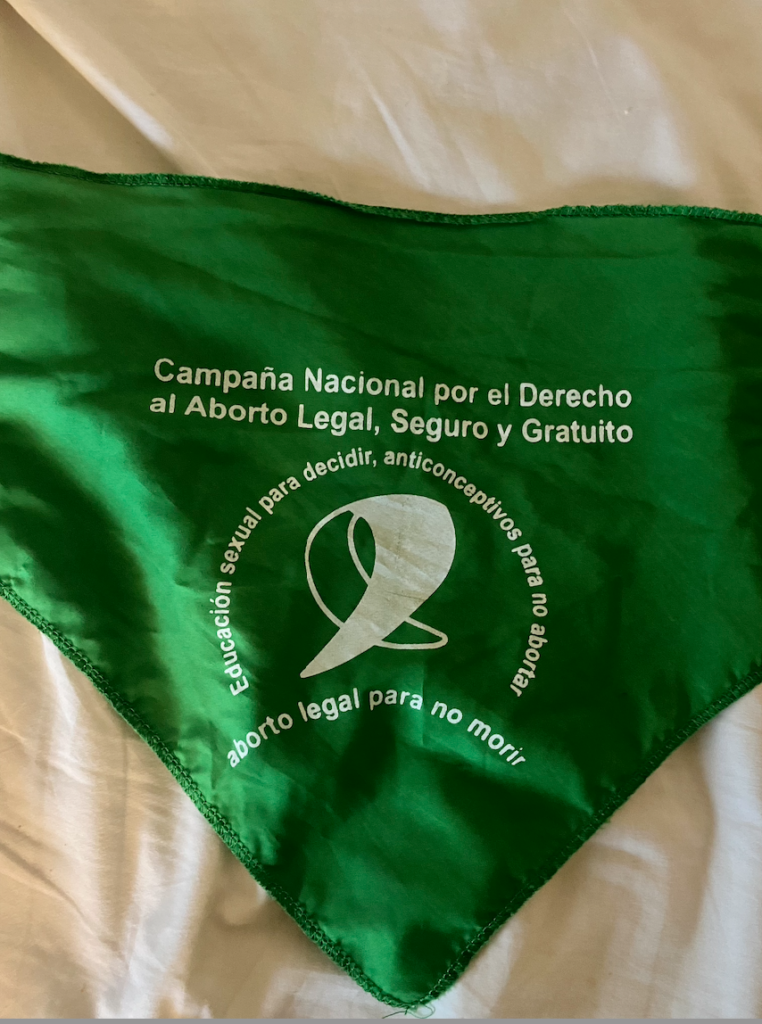The State of Reproductive Rights in the Americas

Until 2019, abortions weren’t widely legal anywhere in Latin America except for Cuba and Uruguay; whereas, in the United States, Roe v. Wade widely legalized abortions throughout the country in 1973. Within the last two years, however, countries in Latin America made advances in reproductive rights while the U.S. became increasingly restrictive and finally overturned Roe v. Wade in the Dobbs v. Jackson case. How have the United States and Latin America diverged in their approach to reproductive rights?
In 2015, Argentinian feminists marched with the slogan #NiUnaMenos [“Not one (woman) less”] and started demanding action against gender-based violence and for the end to abortion restrictions. In order to obtain support from the population, #NiUnaMenos framed the issue of abortion as a social justice problem that disproportionally affected low-income women who could not afford safe illegal abortions and often died during clandestine procedures. According to The Economist, upper and middle-class women could get safe illegal abortions by taking misoprostol, which cost about 112 USD, or a surgical abortion which cost 1000 USD. If there were complications, wealthy women could access private healthcare; whereas, low-income women had to seek aid at public hospitals, where the staff was likely to report them.
The strong effects of the protests can be explained by a recent study from Smith and Boas; when Latin American politicians make a controversial issue like abortion salient during an election, the public’s vote will polarize on that basis, led by their existing candidate preferences. An Argentinian pro-choice candidate in Alberto Fernández defeated anti-abortion candidate Mauricio Macri in 2019. Then, in 2020, Fernández promised he would introduce a bill to legalize abortion. On December 30th, 2020, the Argentinian Senate voted in favour of the Voluntary Interruption of Pregnancy Law, and on January 14th, 2021, the Argentinian President enacted the law, making abortions, up to the 14th week of pregnancy, legal and free in Argentina.
Regarding Ecuador, abortions were only legal in two instances: if the pregnancy was the result of the rape of a woman with a disability, or if the pregnancy risked the health or life of the woman. If a woman had an abortion for any other reason, she and the health personnel who provided assistance could face prison time. In April 2021, the Constitutional Court of Ecuador declared that the articles of the Integral Criminal Code (Código Orgánico Integral Penal Inconstitucional), which limited abortion eligibility, were unconstitutional. Therefore, these articles were modified and abortions were decriminalized if the pregnancy was the result of rape to any woman.
According to a report by Human Rights Watch, despite the decriminalization of abortion in certain instances, women face the fear of criminal prosecution, stigmatization, mistreatment by health professionals, and an unnecessarily narrow interpretation of the health exceptions. Therefore, women who qualify to get a legal abortion are still often afraid to obtain one.
In Colombia, the law formerly stated that women had a right to an abortion if the pregnancy was the result of rape, the fetus was unviable outside the uterus, or the physical or mental health of the mother was at risk. Under any other circumstance, an abortion could lead women to serve up to four and a half years in prison. According to a report by Colombia’s Universidad de Los Andes, 97 per cent of the persecuted women are low-income peasant women from rural areas.

In 2020, a coalition of feminist organizations known as Causa Justa [Just Cause] presented a lawsuit to Colombia’s Constitutional Court demanding the decriminalization of abortions under any circumstance without a time limit. The organization framed it as a public health issue because restrictions did not prevent women from attempting unsafe abortions. On January 21st, 2022, the Court passed a resolution decriminalizing abortions only until the 24th week of the pregnancy. Since then, the website of the Colombian Ministry of Health states the following:
“The Constitutional Court recognizes that the voluntary interruption of pregnancy is a right (…) the confidentiality of women who solicit abortions should be respected, as well as their right to not be revictimized, discriminated, blamed, or stigmatized.”
Contrary to Argentina, Ecuador, and Colombia, abortions in the United States were legalized in 1973 when abortion was relatively a non-partisan issue. In fact, in the 1977 General Social Survey poll, it was found that 39 per cent of Republicans supported abortions being legal for any issue, while 35 per cent of Democrats thought similarly. However, according to legal historian Mary Ziegler, in the 1980s, Evangelical churches started opposing abortion another progressive developments, because they saw it as a threat to “family values.” By the year 2000, the differences in opinion between parties became increasingly noticeable, with 45 per cent of Democrats supporting abortions for any reason, but only 31 per cent of Republicans sharing the same opinion. In 2021, 106 abortion restriction bills were enacted across 19 states. For instance, Texas passed the “heartbeat” bill, which prohibited abortions after a “fetal heartbeat is detected”; that is, usually during the sixth week of pregnancy. The most important development on the abortion narrative happened on June 24th, 2022 when the conservative-majority Supreme Court, led by Samuel Alito, overturned Roe v. Wade and allowed states to decide independently over the legality of abortions. As a result, states like Arkansas, Idaho, Kentucky, Louisiana, Mississippi, Missouri, North Dakota, Oklahoma, South Dakota, Tennessee, Texas, Utah, and Wyoming passed trigger laws to ban abortions immediately.
In the protests that followed the overturning of Roe v. Wade, American women’s rights activists, inspired by their Latin American counterparts, began using green bandanas as a symbol of reproductive justice. During the midterm elections of November 2022, abortion was cited by the public as a driving reason to vote, even across party lines. In fact, during the midterm election as well, states like California, Vermont, and Michigan voted to codify abortion rights into their state constitutions. In addition, Kentucky voters rejected a bill that would have established that the state constitution does not protect abortion rights.
The support for abortion in the 2022 midterm elections is consistent with opinion polls on abortion. In fact, 61 per cent of Americans, a clear majority, support abortion being legal in most or all cases, while only 37 per cent of Americans believe that it should be illegal in most or all cases. Moreover, the partisan divide is even more shocking: 80 per cent of Democrats believe that abortions should be legal in most or all cases, while only 38 per cent of Republicans agree.

Latin American countries seem to be very slowly leaving behind their history of restricting reproductive rights. However, as we can see from the case of Ecuador, which only legalized abortions in case of rape, this fight is far from over. The United States was once a pioneer of reproductive rights as compared to its southern neighbours—it now seems to be in the process of moving backwards.
Edited by Max Rosen.
Featured image: Feminist march in Bogotá, Colombia. The sign reads “Until abortion is free in all of Latin America.” The picture was taken by Valeria Borrero, a Colombian student, and friend of the author, who attended the protest.
